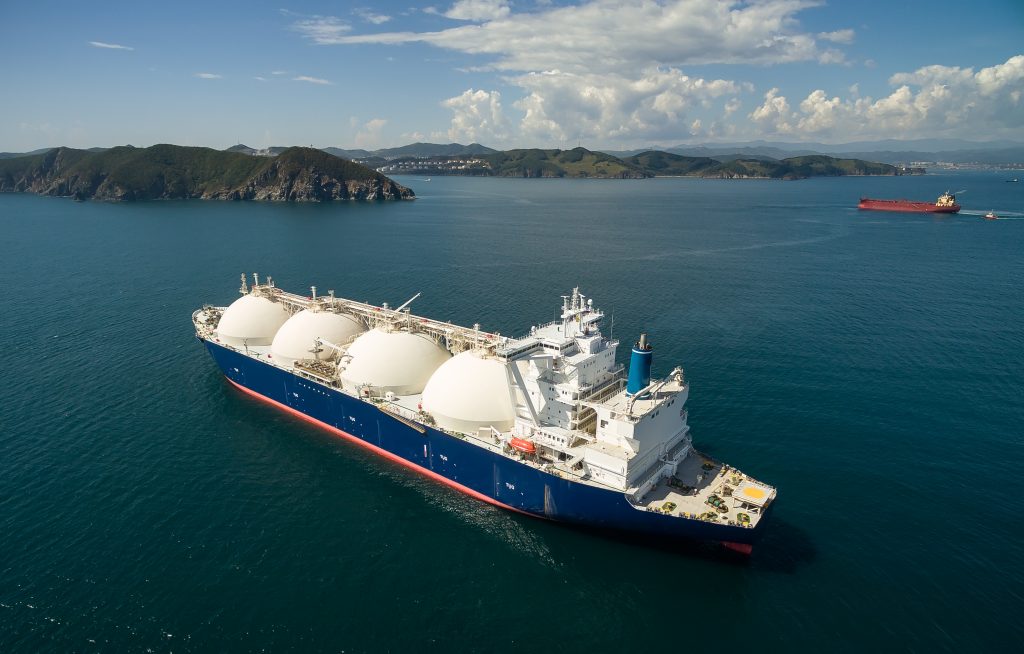
- ARAB NEWS
- 04 May 2024

Major Asian buyers of Russian liquefied natural gas (LNG) said they have yet to receive a request to pay for supplies in Russian roubles after a senior manager at gas producer Gazprom floated a proposal to expand the payment scheme.
The rouble payment proposal comes just days after Russia moved to seize operations of the Sakhalin-2 LNG plant in retaliation for Western sanctions, raising supply concerns for top buyers such as Japan and South Korea.
Russia has already demanded European oil and gas buyers pay in roubles as its economy, cut off the global financial system, faces the gravest crisis since the 1991 collapse of the Soviet Union. Receiving payments for energy exports in roubles helps Moscow circumvent sanctions and finance its war in Ukraine.
Kirill Polous, a deputy department head Russian gas producer Gazprom, said Gazprom has proposed expanding its rouble-for-gas scheme to include liquefied natural gas (LNG), the Interfax news agency reported, citing the senior manager on Monday.
Spokespeople at Japan’s biggest LNG importer JERA and South Korea’s state run Korea Gas Corp (KOGAS) said the companies have yet to receive a request to pay for LNG supplies in roubles.
Both companies have long-term contracts with Sakhalin Energy Investment Company, in which Gazprom owns 50%, Shell 27.5%, Mitsui 12.5% and Mitsubishi Corp 10%.
Russia accounts for around 8% of global LNG supply with 40 billion cubic metres of super-cooled gas per year coming mainly from Sakhalin-2 and Novatek’s Yamal LNG, Russia’s largest LNG plant.
Buyers of LNG from the Sakhalin-2 facility include Japanese utilities which are lifting 60% of the output, followed by South Korea’s state run Korea Gas Corp (KOGAS) and Taiwan’s CPC.
Russian supplies account for 6% of South Korea’s LNG imports, the KOGAS spokesperson said.
Another Japanese buyer, Tokyo Gas, declined to comment, citing a confidentiality clause in its Sakhalin-2 LNG agreement, when asked whether the city gas supplier has received a request for rouble payment.
Taiwan’s Economy Ministry said state-owned refiner CPC’s five-year contract to directly buy LNG from Russia has ended.
The company has already found alternate sources “so there are no rouble purchase or settlement issues involved”, the ministry added. CPC last imported two cargoes from Sakhalin and Yamal that discharged in June, according to Refinitiv data.
Key long-term LNG buyers from the Yamal facility include China’s CNPC, Gazprom Marketing & Trading, Naturgy, Novatek and TotalEnergies.
The proposal should not come as a surprise as the move makes all payments for gas, whether piped or as LNG, chargeable by Gazprom in roubles at its discretion, Tilak Doshi, managing director, Doshi Consulting said.
“It would seem that the Russian “gas for roubles” scheme was directed primarily at the EU and U.S. for their unilateral expropriation of Russian foreign exchange reserves, and not at its Asian LNG customers such as South Korea and Japan who are important purchasers of Russia’s LNG,” he added.) – Major Asian buyers of Russian liquefied natural gas (LNG) said they have yet to receive a request to pay for supplies in Russian roubles after a senior manager at gas producer Gazprom floated a proposal to expand the payment scheme.
The rouble payment proposal comes just days after Russia moved to seize operations of the Sakhalin-2 LNG plant in retaliation for Western sanctions, raising supply concerns for top buyers such as Japan and South Korea.
Russia has already demanded European oil and gas buyers pay in roubles as its economy, cut off the global financial system, faces the gravest crisis since the 1991 collapse of the Soviet Union. Receiving payments for energy exports in roubles helps Moscow circumvent sanctions and finance its war in Ukraine.
Kirill Polous, a deputy department head Russian gas producer Gazprom, said Gazprom has proposed expanding its rouble-for-gas scheme to include liquefied natural gas (LNG), the Interfax news agency reported, citing the senior manager on Monday.
Spokespeople at Japan’s biggest LNG importer JERA and South Korea’s state run Korea Gas Corp (KOGAS) said the companies have yet to receive a request to pay for LNG supplies in roubles.
Both companies have long-term contracts with Sakhalin Energy Investment Company, in which Gazprom owns 50%, Shell 27.5%, Mitsui 12.5% and Mitsubishi Corp 10%.
Russia accounts for around 8% of global LNG supply with 40 billion cubic metres of super-cooled gas per year coming mainly from Sakhalin-2 and Novatek’s Yamal LNG, Russia’s largest LNG plant.
Buyers of LNG from the Sakhalin-2 facility include Japanese utilities which are lifting 60% of the output, followed by South Korea’s state run Korea Gas Corp (KOGAS) and Taiwan’s CPC.
Russian supplies account for 6% of South Korea’s LNG imports, the KOGAS spokesperson said.
Another Japanese buyer, Tokyo Gas, declined to comment, citing a confidentiality clause in its Sakhalin-2 LNG agreement,
when asked whether the city gas supplier has received a request for rouble payment.
Taiwan’s Economy Ministry said state-owned refiner CPC’s five-year contract to directly buy LNG from Russia has ended.
The company has already found alternate sources “so there are no rouble purchase or settlement issues involved”, the ministry added. CPC last imported two cargoes from Sakhalin and Yamal that discharged in June, according to Refinitiv data.
Key long-term LNG buyers from the Yamal facility include China’s CNPC, Gazprom Marketing & Trading, Naturgy, Novatek and TotalEnergies.
The proposal should not come as a surprise as the move makes all payments for gas, whether piped or as LNG, chargeable by Gazprom in roubles at its discretion, Tilak Doshi, managing director, Doshi Consulting said.
“It would seem that the Russian “gas for roubles” scheme was directed primarily at the EU and U.S. for their unilateral expropriation of Russian foreign exchange reserves, and not at its Asian LNG customers such as South Korea and Japan who are important purchasers of Russia’s LNG,” he added.
Reuters